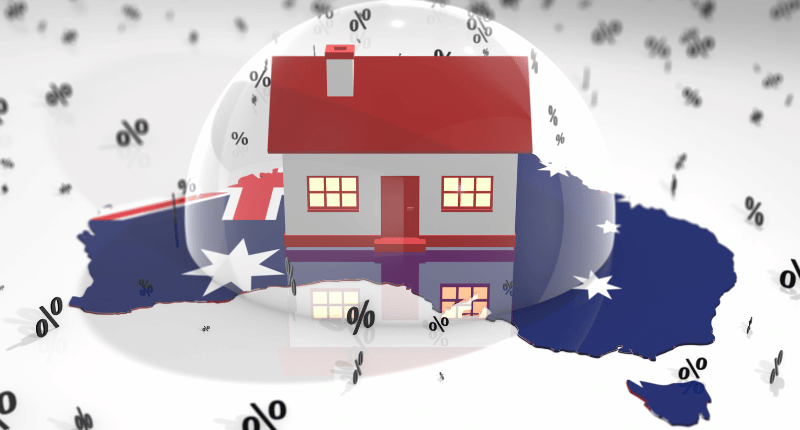- Demand will continue to substantially outstrip supply across Australian markets
- Certain government decisions will influence market outcome this year
- Housing affordability initiatives need to be monitored
The beginning of each year is an opportunity to consider what might unfold over the coming 12 months in property markets. I like to reflect on what’s happened recently, how long-term trends are playing out, and what pending events could come together and influence real estate activity. Armed with this knowledge I can make some important decisions based on reasoned considerations, experience, skill, and evidence.
With this in mind, I’d like to share my thoughts on what I believe is in store for real estate markets in 2024, and especially what property buyers must watch out for.
A year of potential
Let me cut to the chase early – my overall view is that property will generally perform well across the nation this year, and it comes down to the two bedrock fundamentals of supply and demand.
The demand side of the equation continues to be driven by population growth and shifting demographics, both of which are fuelled by our nation’s record immigration intake.
According to the Australian Bureau of Statistics (ABS), overseas migration in 2022/23 resulted in a net annual gain of 518,000 people. The stats showed Australia saw migrant arrivals during that period increase by 73% to 737,000 compared to just 427,000 arrivals for the previous year.
While that immigration growth will likely ease in the coming year, it will remain at historically elevated levels. Australia continues to be one of the world’s most politically stable, economically open, conflict-free nations. Ex-pats are happy to return and almost countless others from across the oceans would love to settle here and build a life.
And most new arrivals need to rent when they land. That puts enormous upward pressure on our already tight rental markets – particularly in our capital cities. The numbers show Brisbane, Adelaide, and Perth in particular are seeing a swell of demand from both investors and homebuyers in response to this unrelenting want for shelter.
Stimulus from the government for first homeowners is also boosting demand, especially at the lower-priced end of the market. This is the same sector where investors tend to operate and provide most of the rental property stock. The result is upward pressure on prices.
Looking at supply, the headwinds of last year endure, which means available housing stock will continue to be restricted.
Construction costs remain high and while the inflation in building materials has eased slightly, demand for labour is seeing tradespeople charge more and more for their services. New housing – be it detached homes, units, or townhouses – will be hard to get out of the ground quickly and cheaply.

And don’t expect government housing policy to turn things around. While many might applaud the ambitious goals set by federal politicians in their housing policy last year, the reality is it will be near impossible to deliver on their plan to build 1.2 million well-located homes.
Then there’s the ongoing impact of tight lending policies. There’s a real challenge for those wanting to invest in property in getting finance approval. Many who would like to participate in the market simply can’t get the bank to come along for the ride. As such, there’s a cohort of folk who could help boost the supply of rental housing but are unable to act, thus further restricting supply.
A further hit to supply has been the plethora of anti-landlord legislation introduced over the past few years. The onus keeps falling upon landlords to bear the brunt of rental increases, adapting homes to meet tenant requirements and to be party to rental agreements firmly weighted in favour of residents. As such, many landlords have exited the market and redeployed their capital elsewhere, further reducing supply.
Also, tough local government development restrictions, high infrastructure charges and other compliance fees have cut back profit margins on many developments. Again, less participation in new construction has meant lower supply.
So, big picture, I feel there’s little doubt we’ll continue to see rising prices and rents as we proceed into 2024.
Waypoints to watch
There are a few important things to watch out for on your property radar this year.
The first will be ongoing housing affordability initiatives. If governments across all tiers introduce further incentives to assist first home buyers, expect that to stimulate demand and drive prices higher.
The next is interest rate dynamics. I don’t think there will be dramatic changes to interest rates this year. If there are any further rate increases, they will be minimal and far less impactful on buyer sentiment as compared to 2022 and 2023. In fact, rates will probably be cut later in the year which will only drive demand and values up.
Thirdly, look at government interventions overall. Keep a close watch on policies concerning taxation, zoning, and infrastructure development, as they wield influence over supply and demand in a variety of property markets.
Next, international factors will come into play too. Keep abreast of global economic conditions and geopolitical events including conflicts that impact supply chains and energy prices. These are likely to exert pressure on the Australian economy, which flows through to property market confidence.
Finally, if I was to pick just one potential surprise to keep an eye on in 2024, it would be short-stay accommodation restrictions. Various state governments are looking at how to lever some of these short-stay homes back into the traditional rental market – and most will use more carrot than stick. Increased levees and taxes will be the weapon of choice and, if substantial enough, the outcome will be a drop in short-stay supply, and an increase in rental options.





